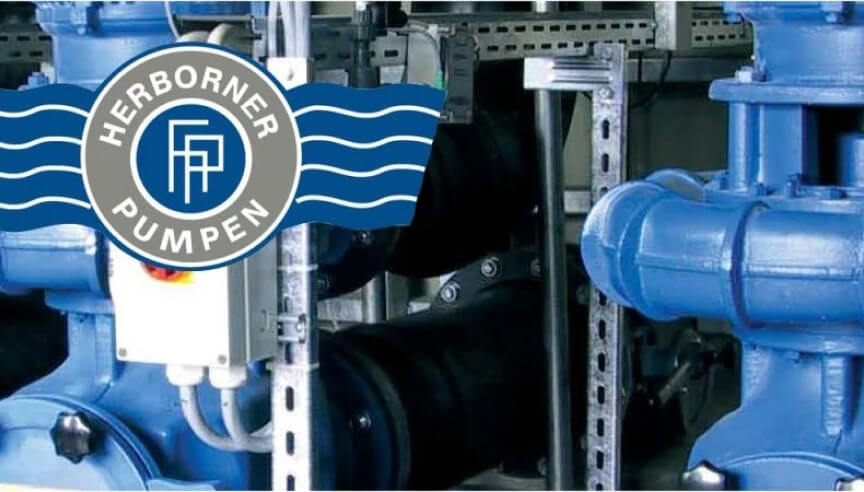Recent Posts
The Benefits of Herborner Pumps

The Benefits of Herborner Pumps: A Study of German Quality, Energy Efficiency, and High Performance in Modern Water Technology
This research paper examines the distinctive benefits of Herborner pumps, a premier brand in the field of water pump technology, known for its German engineering standards, energy efficiency, and high performance. Drawing on technical specifications, case studies, and industry benchmarks, the study explores how Herborner pumps provide long-term value across a variety of demanding applications including swimming pools, wastewater treatment, shipbuilding, and industrial processes. The findings underscore the brand’s reputation for engineering excellence and demonstrate its contribution to sustainable and reliable water movement systems worldwide.
Introduction
Efficient and reliable pump technology is critical in industries where water circulation and management are central to daily operations. Herborner Pumpentechnik GmbH & Co. KG, based in Germany, has carved a unique position in this sector through its unwavering commitment to engineering precision, innovation, and product longevity. This paper explores the technical and operational benefits of Herborner pumps, focusing on how German manufacturing principles, energy-conscious designs, and optimized hydraulic performance translate into tangible advantages for end-users.
German Engineering and Manufacturing Excellence
German manufacturing is globally synonymous with precision, quality, and durability. Herborner pumps exemplify these traits, being manufactured in-house in Herborn, Germany, with meticulous attention to materials, machining, and testing. The company controls every stage of production—from design and casting to final assembly and testing—ensuring each pump meets the highest mechanical and performance standards.
The use of high-grade cast iron and special coatings such as the herborner’s own enamel-like ceramic epoxy not only extends pump life but also improves resistance to wear, corrosion, and aggressive media. The rigorous in-house testing procedures further guarantee consistent quality and compliance with international standards such as ISO 9001 and DIN EN standards for pump performance.
Energy Efficiency and Environmental Impact
Energy consumption in pump operations can account for a significant portion of operating costs, particularly in large installations like public swimming pools, water parks, and treatment plants. Herborner addresses this challenge with hydraulically optimized impeller designs, electronically commutated (EC) motors, and the integration of variable frequency drives (VFDs) to adjust pump speed based on demand.
Independent tests have shown that Herborner pumps can reduce energy consumption by up to 30% compared to conventional systems. These reductions are not only economically beneficial but also help facilities meet environmental sustainability goals. In an era where carbon footprint reduction is becoming mandatory, Herborner’s focus on energy-efficient engineering stands as a clear advantage for operators worldwide.
High Performance and Application Flexibility
Herborner pumps are designed to perform reliably under a wide range of operational conditions. Their hydraulic systems are engineered to deliver constant flow rates and maintain pressure stability even under fluctuating loads. The brand offers tailored solutions for different sectors including:
- Swimming Pools and Spas:
Herborner pumps ensure quiet operation, hygienic water circulation, and minimal downtime. - Wastewater Treatment:
The robust construction and ability to handle contaminated water with solids make these pumps a top choice for municipal and industrial wastewater management. - Marine and Shipbuilding:
With corrosion-resistant materials and compact footprints, Herborner pumps meet the high standards of seawater circulation and onboard systems. - Industrial Processes:
The high tolerance to aggressive chemicals and precise flow control make them ideal for sensitive manufacturing environments.
Advanced monitoring and control options allow for integration with building management systems and IoT platforms, giving operators real-time insight into pump conditions and enabling predictive maintenance practices.
Conclusion
Herborner pumps represent a benchmark in modern pump technology by delivering a rare combination of German engineering reliability, outstanding energy efficiency, and superior hydraulic performance. In a marketplace where operational efficiency and environmental responsibility are equally important, Herborner continues to lead through innovation, rigorous standards, and customer-oriented design.
This research supports the notion that investment in premium pump technology—such as that offered by Herborner—not only reduces lifecycle costs but also contributes to sustainable water infrastructure development. As the global demand for smarter, cleaner, and more efficient water solutions grows, Herborner pumps remain a strategic asset across multiple industries.
